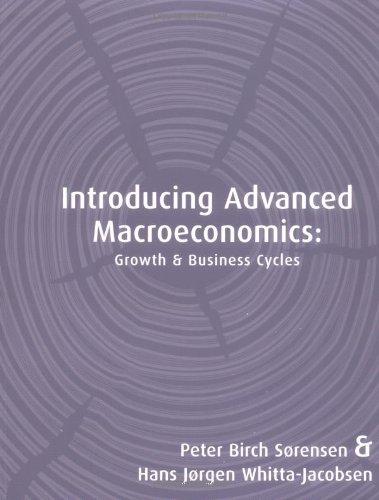Exercise 1 abo'le pointed to an{other) empirical shortcoming of the Solow model without human capital. The model's
Question:
Exercise 1 abo'le pointed to an{other) empirical shortcoming of the Solow model without human capital. The model's prediction that the investment rate in physical capital and the population growth rates should affect GOP per worker equally strongly (but in opposite directions) does not seem to hold true empirically. Rather, there seems to be a stronger influence from the population growth rate than from the investment rate, a feature indeed found in the Solow model with human capital. Let's now take this latter model through a similar direct ct>allenge. The steady state prediction of the Solow model with human capital is
(setting ng s; O):
a ~ lny7 ,;;;(nA1+ [lnsK-In(n+g+())] + [lnsH- In(n +g + (5)] . -a- ~ -a- ~
Find the elasticities of y7 with respect to sK, sH and n + g + o, respectively. Show that if a = ~ = ~ (as we more or less believe) then the elasticities with respect to sK and sH should be of equal size and both should be one, while the elasticity with respect to n + g + (5 should be twice as large in absolute value.
Taking data from Table A and leaving out countries with 0 in data quality, do an OLS estimation of the following regression equation (requires that you can do an OLS estimation with more than one explanatory variable on the right-hand side):
ny = K+y In c In +v ln(n;+ 0.075),
Step by Step Answer:

Introducing Advanced Macroeconomics: Growth And Business Cycles
ISBN: 9783031200922
1st Edition
Authors: Peter Birch Sørensen, Hans Jørgen Whitta-Jacobsen






